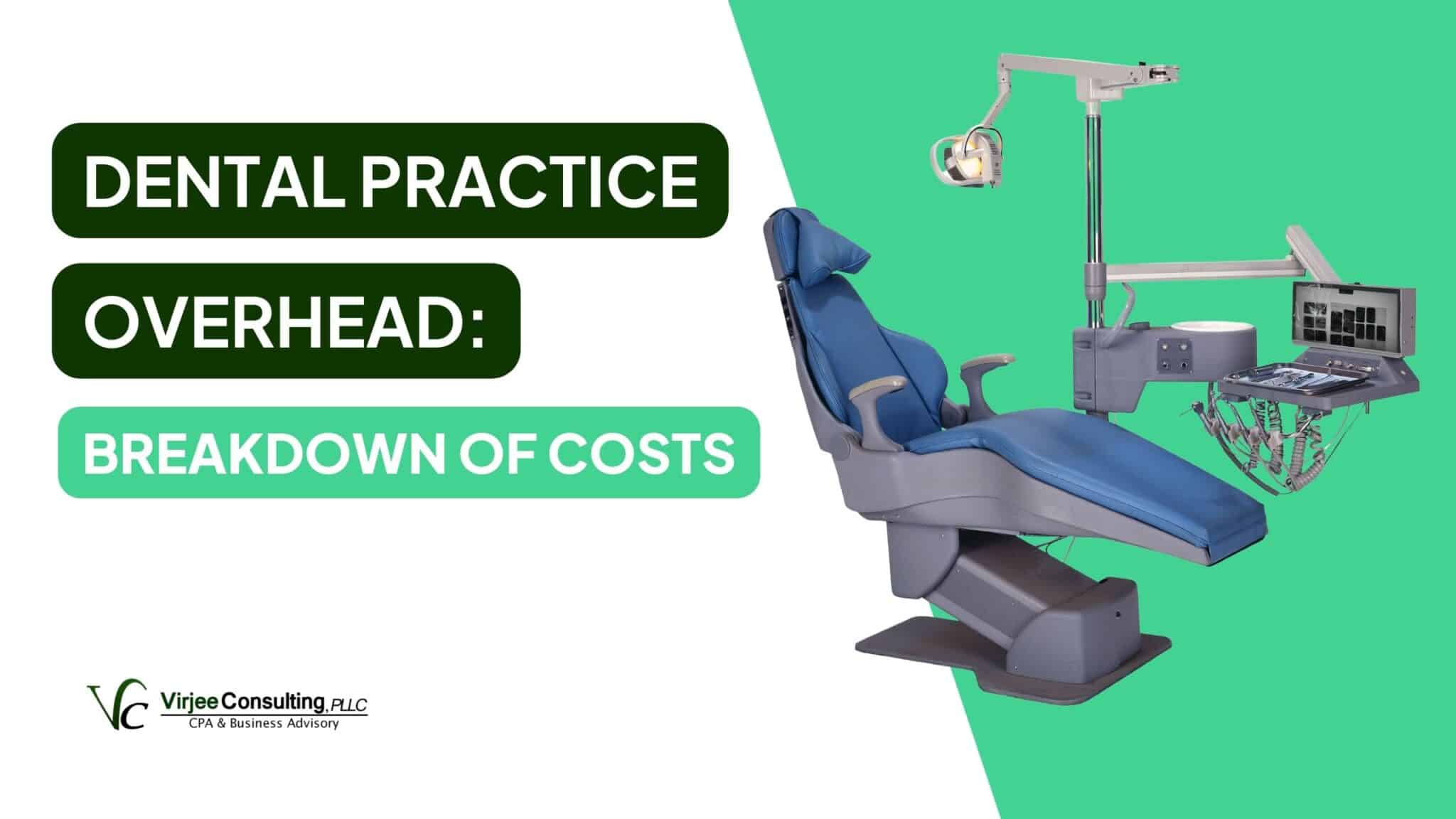Top-line revenue is only worth celebrating when it leads to solid profit margins.
At the end of the day, what really matters is how much you’re taking home each month.
If you find that your take-home pay isn’t quite what you’d hoped, it’s worth digging into what expenses might be eating away at your revenue.
The American Dental Association (ADA) reports that dental practice overhead typically averages around 62% of a dental practice’s total revenue.
So, how does your practice measure up? Let’s break down the key components of dental practice overhead to help you get a clearer picture of where your money is going and identify any areas for improvement:
But first, what’s considered overhead in a dental practice?
Overhead includes all the costs needed to keep your practice running, even though these expenses don’t directly generate revenue.
That’s not to say that overhead is useless—it’s essential for the growth and stability of your day-to-day operations.
Think of costs like rent, utilities, supplies, and equipment. While these expenses don’t bring in revenue on their own, your business couldn’t function without them.
The key is to keep these costs in check so they don’t eat too much into your profits. That way, you can hold on to more of your revenue to reinvest in growth, support your staff, or boost your own take-home pay.
Classifications of Overhead Costs
Overhead can be broken down into two main types: fixed and variable costs.
From the name itself, fixed costs are costs that remain the same regardless of patient volume or income. Whether you see one patient or have a full schedule, you’ll still pay the same for rent, office insurance, and other consistent expenses.
We recommend keeping fixed costs between 15-30% of your revenue.
Because fixed costs are harder to change, they’re usually not the main focus when planning cost-saving strategies.
Variable costs, on the other hand, fluctuate based on your practice’s activity. For example, the more patients you are servicing, the higher your expenses for dental supplies like toothpaste or paper bibs will be.
Ideally, variable costs should run you around 15-20%.
Controlling variable costs is more practical, as they move with patient volume. This gives you more flexibility to fine-tune your spending and maintain control over your budget.
If you haven’t already, be sure to read our article on the top 5 dental key performance indicators (KPIs) to learn more about fixed and variable costs and why it’s important to keep an eye on them each month.
Dental Practice Overhead Breakdown
Let’s take a closer look at what makes up dental practice overhead.
Here are the main categories that typically contribute:
| Overhead Item | Percentage of Revenue |
| Staffing Costs | 25-27% |
| Facility Costs | 7-9% |
| Clinical Costs | 14-16% |
| Administrative Costs | 6-8% |
| Discretionary Expenses | 2-4% |
| Total | 54-64% |
Staffing Costs
Staffing costs are one of the biggest parts of dental practice overhead, taking up around 25-27% of total revenue.
And it makes sense—your team, from hygienists to administrative staff, is essential for keeping your practice running smoothly and maintaining high-quality care.
The challenge is finding the right balance. You want to spend wisely on salaries, benefits, payroll taxes, and bonuses while making sure your team is working efficiently.
Overstaffing or having employees with overlapping roles can lead to unnecessary expenses, while understaffing could hurt the patient experience.
For more detailed strategies on this, check out our round-up of actionable tips to manage labor costs.
Facility Costs
Rent, utilities, and office-related expenses take a notable chunk of 7-9% of your revenue.
To make the most of your rent, consider factors like how close you are to your target patients, parking availability, and overall accessibility. While rent is a fixed cost and may not be easy to change, there are ways to manage other facility expenses.
Upgrading to energy-efficient lighting or equipment, for example, can help lower your utility bills over time.
Clinical Costs
Clinical costs include all the expenses tied to patient care, from everyday dental supplies like masks, gloves, and toothpaste to larger investments like dental chairs, X-ray machines, and operatory lights.
Typically, these costs make up about 14-16% of a dental practice’s overhead.
While it’s crucial to provide top-tier care, there are ways to control clinical costs without sacrificing quality.
Efficient inventory management is key—over-ordering supplies ties up capital unnecessarily and increases the risk of expiration and waste. Consider using inventory software that tracks your usage and provides reminders for reordering at the right time. Similarly, invest in regular maintenance for expensive dental equipment to avoid costly repairs or premature replacements.
Administrative Costs
Administrative costs are often the “silent” overhead expenses that add up quickly. These include office supplies, software systems (such as practice management software), billing services, accounting fees, and more.
These costs generally account for 6-8% of your practice’s revenue.
One way to keep these costs under control is by using automation. Automated billing, appointment reminders, and electronic health records can streamline daily operations and reduce the time and effort needed from your team, making your practice more cost-effective.
Discretionary Expenses
Discretionary expenses are those costs that can be trimmed or even cut without affecting the essential operations of your dental practice.
These usually account for about 2-4% of your revenue and can include things like marketing, office decor, business travel, or staff entertainment.
Check whether what you’re paying for these things is truly yielding results for your practice. If they’re not, it may be worth cutting back.
For example, instead of investing in top-tier decor, you could focus on creating a clean, welcoming environment that aligns with your brand without the need to overspend.
Continuing education and professional organization fees also fall under this category.
Since these are important for your growth, cutting them completely isn’t the best move.
Instead, optimize your spending by prioritizing high-value courses or choosing online courses, which are often more affordable than in-person seminars.
Using Tax Write-Offs to Reduce Overhead
Leveraging tax write-offs can help reduce your practice’s overhead.
Items such as office equipment, property, continuing education, and even certain renovations can often be written off.
For instance, Section 179 deductions allow you to deduct the full purchase price of qualifying equipment (like new dental chairs or digital X-ray systems) in the year it’s placed in service, rather than depreciating it over time.
Another strategy that will significantly reduce your tax liability is using the Short-Term Rental (STR) strategy, where you rent out a property, such as an office space or other real estate you own, for up to 14 days a year without having to report that rental income as taxable.
The process of availing tax write-offs can be complex, but our experienced team of dental CPAs can do the legwork for you.
Recap: Your Dental Practice Overhead
The short story? Overhead can either quietly eat into your profits or be a well-managed part of your practice that supports growth.
The key is staying aware and taking control.
By breaking down your costs and avoiding the common pitfalls we’ve highlighted, you’ll be well on your way to keeping more money in your pocket without sacrificing patient care or staff happiness.
If managing overhead feels overwhelming, we’re here to help. Join the hundreds of happy dentists who trust us to keep their practices financially healthy.
Simply head over to our Getting Started page to book an introductory call to see how we can help.
Until next time!

